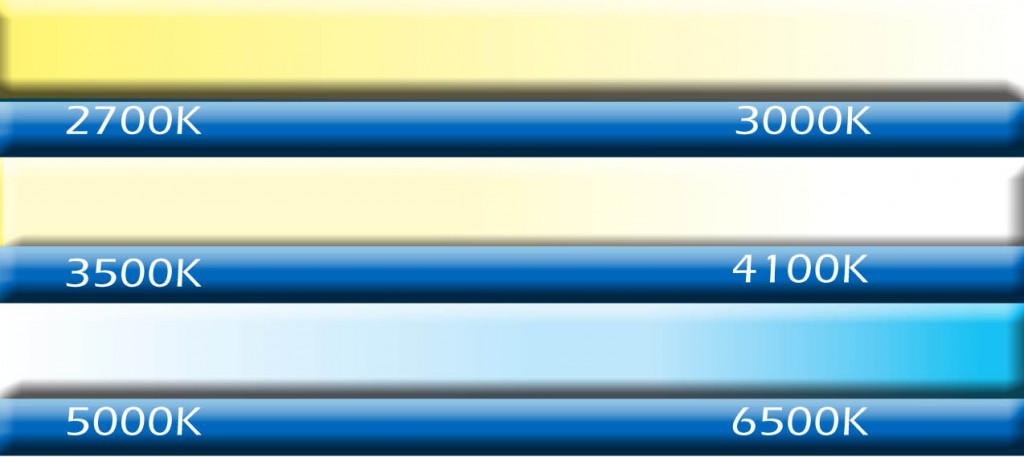- By Clarissa Allison | May 1st, 2015
LED lighting has made a colossal impact since it was first introduced to the market in 1962. What used to be simply white or blue dim light output is now available in most spectrums of the color temperature as well as high output light. LED fixtures can now compete with most of the standard types of incandescent, halogen and fluorescent fixtures that were commonly the only solution available for most uses.
Recently introduced to the market are retro fitted LED bulbs that you can replace your incandescent, fluorescent or halogen bulbs with.
So what is the big deal about LED technology, anyway? For starters they carry a much longer life span than incandescent, halogen, or a fluorescent bulb – which means fewer times you have to change them. No more will you haul a ladder from the garage and teeter 15 feet, balancing over staircases or glassware. This fact alone makes LED an automatic winner. But why stop there? You’ll find many other benefits of using LEDs.
- Green – Green – Green!! Yes, LEDs are considered “Green Technology”. Since they consume less electricity and last longer, they are not disposed of often which saves space in our landfills. They also contain no mercury which in high doses can lead to a plethora of illnesses. This should give anyone the warm and fuzzy feeling of knowing they are saving the planet one bulb at a time!
- The LEDs of today are manufactured in the full color spectrum giving you the power to select which color temperature works best for your application. You have the ability to choose from different color temperatures, including white light, warm white and more, as well as color changing lights.

A standard incandescent bulb used in the home is typically between 2700K -3000K. 4000K casts “Cool white light.” This temperature is best for bathrooms and hallways resulting in a brighter, cleaner atmosphere. 6000K is known as “Day Light” and provides a bluish hue best for security applications, garages, and utility rooms.
- LEDs consume less power, which means the bulb does not get over-heated as compared to halogen or fluorescent bulbs. This is a huge value for consumers who own any bulbs that are used near fragile shades such as silk or paper. It will also come in handy when using enclosed fixtures such as outdoor well lights or spot lights to prevent heat build-up inside the fixture. This will also result in less heat being emitted into your space, which in turn reduces energy bills!
- Many LEDs are now high lumen intensity which means they are BRIGHT!! Many cities across America are converting their street lamps to LEDs since they are just as bright as their predecessor. The thinking that LEDs are dim and do not give off much light is a thing of the past.
- The lifespan of an LED can be up to 50,000 hours which is about fifty times greater than a standard incandescent bulb, about twenty times longer than a typical halogen bulb, and about five times longer than a compact fluorescent. This means that if you use a 50,000 bulb for ten hours a day it will last for over 13 years! If you are using the bulb about 5 hours a day for landscape lighting only, your LED lamp can last over 27 years!
There are 2 types of LEDs – some have a built in LED module (meaning the lights are a part of the fixture) and a retro fitter LED bulb which can be taken out of the fixture and replaced. Many of these are able to be replaced when they eventually burn out so that you avoid having to replace the entire fixture.
Some LED fixtures are low voltage and will require a transformer to operate. Determining which transformer you need can be a bit tricky as some require AC power and others DC power. Look at your LED fixture to verify which it uses. Most new LED fixtures use AC power allowing you to convert your old landscape lights with new LED versions without having to replace your existing AC transformer. Since LEDs consume very low wattage, typically only a very small wattage transformer is needed, which will save you up front costs. Determine if you want your LED fixture to dim as some LED bulbs are dimmable. You would then need a dimming transformer and a corresponding dimmer for that functionality.
Although LED fixtures and lamps’ initial cost are more expensive than standard bulbs, since they last vastly longer and consume much less energy, the cost savings will be seen in the long run. Reputable brand names should be highly considered when making your purchasing decision in order to purchase quality bulbs.
Visit the Louie Lighting website today to peruse our enormous array of LED bulbs and LED landscape lighting fixtures. If you have questions, please contact us today at 1-877-385-2104 or email info@louielighting.com






Leave a Reply